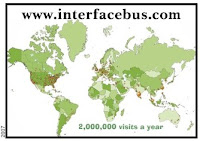
I'm reminded that at midnight on February 17, 2009, federal law requires that all full-power television broadcast stations stop broadcasting in analog format and broadcast only in digital format.
As of March 1, 2007, all television receivers shipped in interstate commerce or imported into the United States must contain a digital tuner.
A special antenna generally is not needed to receive digital signals. You may have antenna issues, however, if your current antenna does not receive UHF signals (channels 14 and above) well, because most DTV stations are on UHF channels.
In other words if you don't have cable or satellite or a TV with a Digital Tuner, you receive snow.
-
Standard Definition TV (SDTV) - SDTV is the basic level of quality display and resolution for both analog and digital. Transmission of SDTV may be in either the traditional (4:3) or widescreen (16:9) format.
-
Enhanced Definition TV (EDTV) - EDTV is a step up from Analog Television. EDTV comes in 480p widescreen (16:9) or traditional (4:3) format and provides better picture quality than SDTV, but not as high as HDTV.
-
High Definition TV (HDTV) - HDTV in widescreen format (16:9) provides the highest resolution and picture quality of all digital broadcast formats. Combined with digitally enhanced sound technology, HDTV sets new standards for sound and picture quality in television. (Note: HDTV and digital TV are not the same thing -- HDTV is one format of digital TV.)











